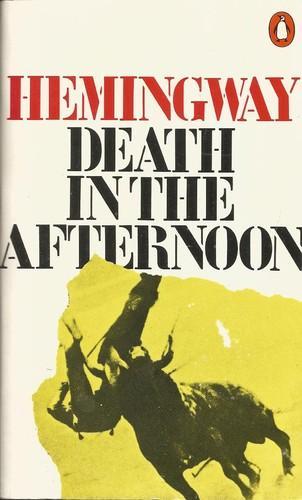Bird_p137 reviewed Death in the afternoon by Ernest Hemingway
Entre arena y sangre – Mi travesía con Muerte en la tarde de Ernest Hemingway
4 stars
Leer Muerte en la tarde de Ernest Hemingway fue para mí una experiencia tan fascinante como incómoda. No es una simple descripción de corridas de toros, sino un tratado que oscila entre la crónica, la reflexión filosófica y la confesión personal. Desde las primeras páginas, sentí que Hemingway me hablaba directamente, con su estilo sobrio y preciso, invitándome a comprender un mundo que, a primera vista, me resultaba ajeno y hasta brutal.
Lo que me impresionó más fue la manera en que Hemingway explica la corrida como un arte, una representación donde el valor humano se mide frente a la muerte. En sus palabras percibí que no se trataba de un espectáculo vacío, sino de una liturgia de riesgo, belleza y tragedia. Sin embargo, mientras avanzaba, yo mismo oscilaba entre la fascinación y el rechazo: podía admirar la elegancia de la descripción, pero no dejar de estremecerme ante la …
Leer Muerte en la tarde de Ernest Hemingway fue para mí una experiencia tan fascinante como incómoda. No es una simple descripción de corridas de toros, sino un tratado que oscila entre la crónica, la reflexión filosófica y la confesión personal. Desde las primeras páginas, sentí que Hemingway me hablaba directamente, con su estilo sobrio y preciso, invitándome a comprender un mundo que, a primera vista, me resultaba ajeno y hasta brutal.
Lo que me impresionó más fue la manera en que Hemingway explica la corrida como un arte, una representación donde el valor humano se mide frente a la muerte. En sus palabras percibí que no se trataba de un espectáculo vacío, sino de una liturgia de riesgo, belleza y tragedia. Sin embargo, mientras avanzaba, yo mismo oscilaba entre la fascinación y el rechazo: podía admirar la elegancia de la descripción, pero no dejar de estremecerme ante la violencia inevitable.
El autor dedica mucho espacio a detallar técnicas, movimientos, la preparación de los toreros y hasta la psicología del público. Me sorprendió descubrir cómo la corrida reflejaba, para él, una verdad más amplia: la necesidad de enfrentar la muerte con dignidad. Esta idea me tocó profundamente, porque me obligó a pensar en cómo vivimos el peligro, la vulnerabilidad y el fin de la existencia en nuestras propias vidas.
Más allá del tema taurino, Muerte en la tarde me pareció un espejo de Hemingway mismo: un hombre obsesionado con el valor, la autenticidad y la búsqueda de sentido frente al abismo. Al terminar el libro, quedé con sentimientos mezclados: incomodidad ante la sangre, pero también un respeto inesperado por la honestidad con la que el autor expone la vida y la muerte como dos caras inseparables de la experiencia humana.

